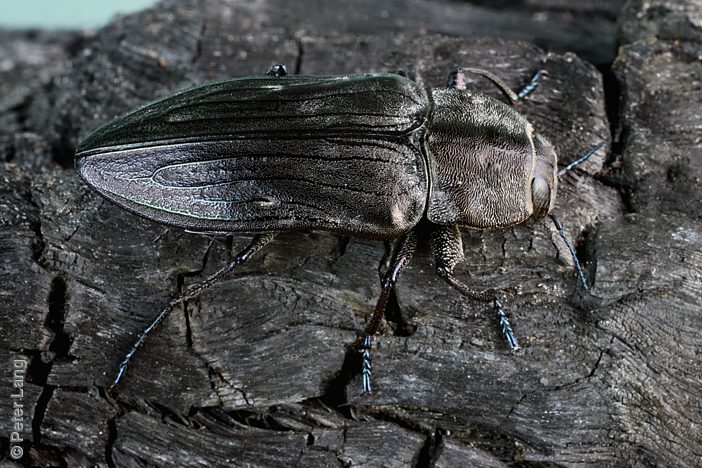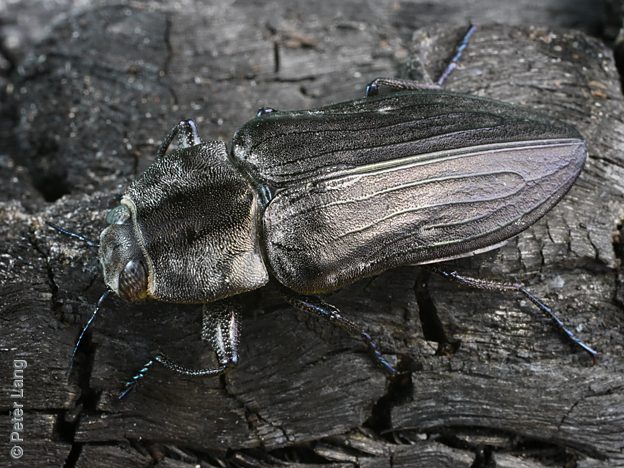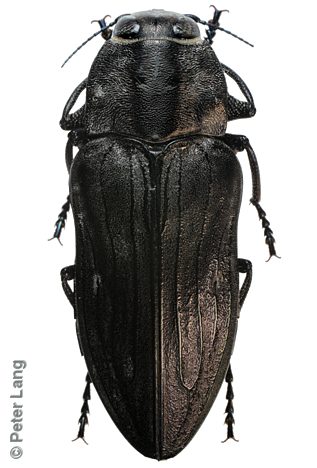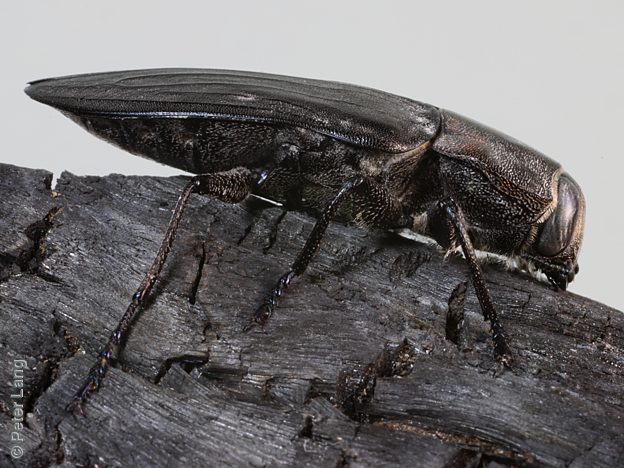Dark charcoal-grey colouration; flattened pronotum narrower than the elytra; elytra with distinct raised 'veins' and weakly developed whitish fovae.
This remarkable species is known as Fire Beetle on account of is amazing adaptations to wildfires. It is a very common species found across mainland Australia in all major climatic zones where fire-adapted and largely Eucalypt-dominated vegetation occurs. It is often attracted to night lights and campfires.
Tepper 1887 described his encounters with this species thus: 'Usually they are seldom seen, as they are in the habit of sitting on the dusky branches and trunks of various gum trees, or running and flying most actively about; but if approached by anyone they manage to keep to the opposite side. I have never, so far as I can remember, met them upon flowers, but on several occasions have seen them flying about in thousands an hour or two after stubble or bush fires in localities I had previously searched in vain for them'. In the Perth area, Peterson observed M. atrata laying eggs into smouldering bark at the base of a Eucalyptus calophylla (Marri) tree Hawkeswood & Peterson 1982.
The behaviour of Merimna was investigated in a detailed study by Schmitz, Schneider & Schmitz 2015 who visited over 35 freshly burnt areas in WA. They found that the beetles arrived at a burnt area and started to invade it as soon as it was safe enough for humans to enter it. The beetles were observed to gather around smouldering hot spots for mate-finding, copulation and oviposition. Schmitz et al. speculate that the heat and smoke provide protection for these activities, having frequently observed Magpies start to prey on the beetles once the area had cooled down. Beetles were only observed laying eggs into bark of Eucalyptus trees that had been burnt sufficiently to destroy the cambium, so ensuring dead wood (inactive and relatively chemical-free) for the larvae.
The ability of Merimna to hone in on burning areas is astounding. Schmitz, Schneider & Schmitz 2015 cite a number of studies which demonstrate that M. atrata can detect with high sensitivity a variety of chemicals released from heated and burning timber. There are also infra-red heat sensors on the underside of the abdomen but according to Schmitz et al. they are not sensitive enough to operate at long range, but may serve to prevent the beetle from landing directly on top of hot spots.
Another interesting aspect of this species' biology is that they were observed by Schmitz et al. to be omnivorous, devouring even the carcass of a small lizard.







